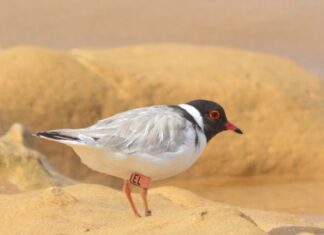Andrew Mathieson
Jan Watson’s not your ordinary Clifton Springs’ 82-year-old.
Not content to ease into retirement with the sleepy seaside town’s pleasures of a spot of bowls or hit of golf, she’s happier slapping on the leathers and making a bit of noise down the highway on her motorbike.
“When I park and I take my helmet off, I get weird looks sometimes,” Jan admits.
“But usually it’s just the people who already know I have a bike who see me. They’re quite happy about me riding a bike at my age and I’ve a lot of good friends in the motorcycling world.”
And rather than long walks along the Dell’s beach with dog in tow, Jan also likes to slip into a wetsuit and dip her toe in the water.
The dip turns into a dive where, with goggles and snorkel, she swims, observes, takes snapshots and can name nearly 500 living sea creatures below the sea.
“It’s still an addiction,” Jan confesses.
Time spent scuba diving can be an excuse to get away from hours peering into a microscope to uncover the latest batch of new organisms.
But the veteran marine biologist is certainly not slowing down after having a crude backyard laboratory purpose-built at home.
The title marine biologist “didn’t actually exist” when Jan was a young girl, she chuckles.
“I started off wanting to be geologist when I grew in Ballarat.
“When I went to the school of mines, they laughed at me because women didn’t do geology.”
Women and the sciences, for some, just didn’t mix back then. Jan knew women whose career paths stopped at either typists or nurses.
“My first job in Ballarat was an applied chemist but when I got married I got the sack because that was what happened in those days,” Jan recalls.
“Things have changed a lot.”
But some things have stayed the same for Jan for most of five decades.
She has since discovered six new genera – huge leaps in biological breakthroughs – and hundreds of new marine species.
More than 100 published papers on her research sit idle, piled on shelves in her home laboratory, like a testimony to her life’s work.
For the past 37 years and counting, Jan has been conducting surveys and assessments into the health of bays.
The latest is to monitor the effects of a steel works’ wastewater on seagrasses and the uptake of metals on mussels.
Most are healthy to eat but Jan can’t get the taste out of her mouth, or stomach it.
“Do you like mussels? Well, you can take most of these away,” she says, pointing to five ropes of sea clams in an Esky.
A move to north-west Queensland sparked Jan’s interest in becoming a marine biologist.
She remembers spotting a diver leaping into in a dam among the uranium mines.
“When we came back to Melbourne to live I and a few friends decided to teach ourselves how to scuba dive at the old Ballieu pool at Melbourne University,” she says.
“I realised after our first few dives that there was a whole world out there that no one knew anything about.”
Get the latest news to your email inbox FREE!
REGISTER





